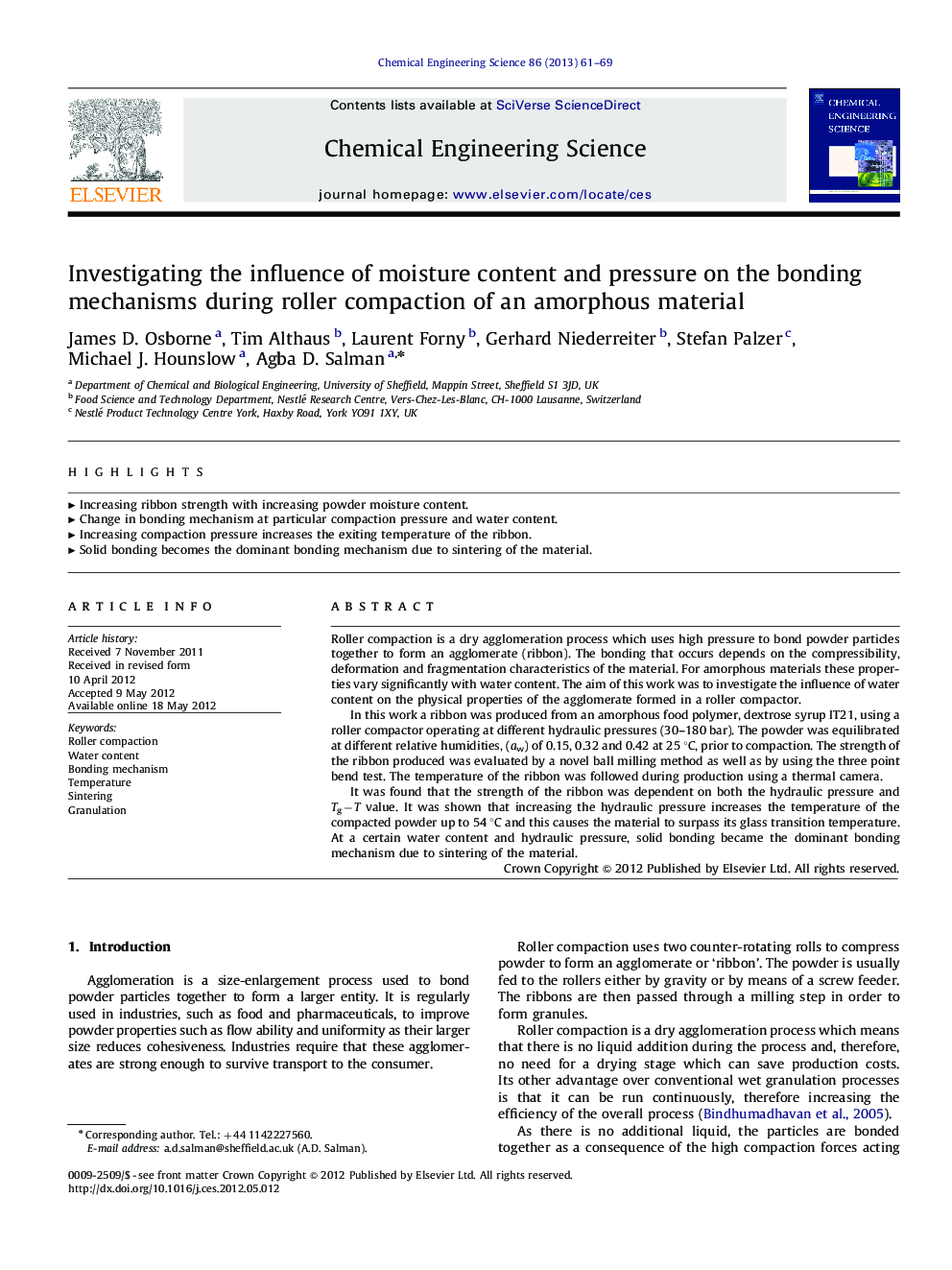| Article ID | Journal | Published Year | Pages | File Type |
|---|---|---|---|---|
| 155447 | Chemical Engineering Science | 2013 | 9 Pages |
Roller compaction is a dry agglomeration process which uses high pressure to bond powder particles together to form an agglomerate (ribbon). The bonding that occurs depends on the compressibility, deformation and fragmentation characteristics of the material. For amorphous materials these properties vary significantly with water content. The aim of this work was to investigate the influence of water content on the physical properties of the agglomerate formed in a roller compactor.In this work a ribbon was produced from an amorphous food polymer, dextrose syrup IT21, using a roller compactor operating at different hydraulic pressures (30–180 bar). The powder was equilibrated at different relative humidities, (aw) of 0.15, 0.32 and 0.42 at 25 °C, prior to compaction. The strength of the ribbon produced was evaluated by a novel ball milling method as well as by using the three point bend test. The temperature of the ribbon was followed during production using a thermal camera.It was found that the strength of the ribbon was dependent on both the hydraulic pressure and Tg−T value. It was shown that increasing the hydraulic pressure increases the temperature of the compacted powder up to 54 °C and this causes the material to surpass its glass transition temperature. At a certain water content and hydraulic pressure, solid bonding became the dominant bonding mechanism due to sintering of the material.
► Increasing ribbon strength with increasing powder moisture content. ► Change in bonding mechanism at particular compaction pressure and water content. ► Increasing compaction pressure increases the exiting temperature of the ribbon. ► Solid bonding becomes the dominant bonding mechanism due to sintering of the material.
